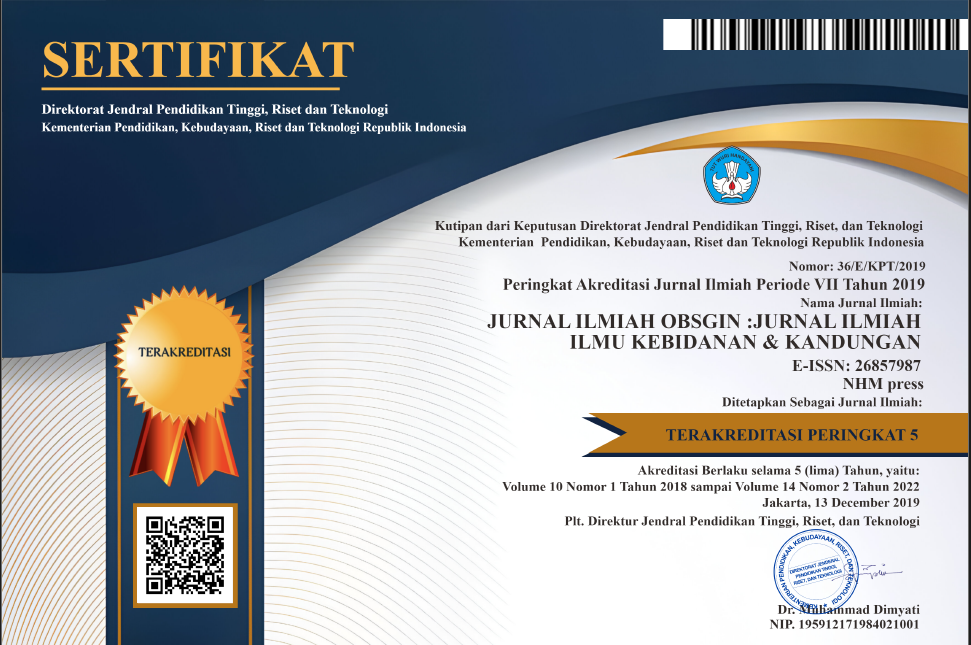THE RELATIONSHIP BETWEEN AGE, PARITY, AND PREGNANCY INTERVAL WITH HEMOGLOBIN LEVELS IN THIRD TRIMESTER PREGNANT WOMEN AT PRAKTIK MANDIRI BIDAN OF FAUZIAH HATTA
Abstract
Hemoglobin levels are one of the hematological parameters that undergo changes during pregnancy. During pregnancy, plasma volume increases by approximately 40-45%, starting progressively in weeks 6-8 of gestation and reaching its peak at weeks 32-34. Concurrently, renal erythropoietin stimulates the increase in red blood cell count by 20-30%. However, the increase in red blood cells is not proportional to the increase in plasma volume, leading to hemodilution and a decrease in hemoglobin levels. This study aims to determine the relationship between age, parity, and pregnancy interval with hemoglobin levels in third-trimester pregnant women. The sample in this study consisted of 40 respondents, all third-trimester pregnant women who attended prenatal visits between September and November 2023. The analysis method used in this study was Pearson correlation. There are three analyses in this study: first, the analysis of the relationship between age and hemoglobin levels showed a p-value of 0.026, which is less than α (0.05), indicating a significant relationship between age and hemoglobin levels in pregnant women. Second, the analysis of the relationship between parity and hemoglobin levels showed a p-value of 0.736, which is greater than α (0.05), meaning there is no relationship between parity and hemoglobin levels in pregnant women. Third, the analysis of the relationship between pregnancy interval and hemoglobin levels showed a p-value of 0.012, which is less than α (0.05), indicating a significant relationship between pregnancy interval and hemoglobin levels in pregnant women.











